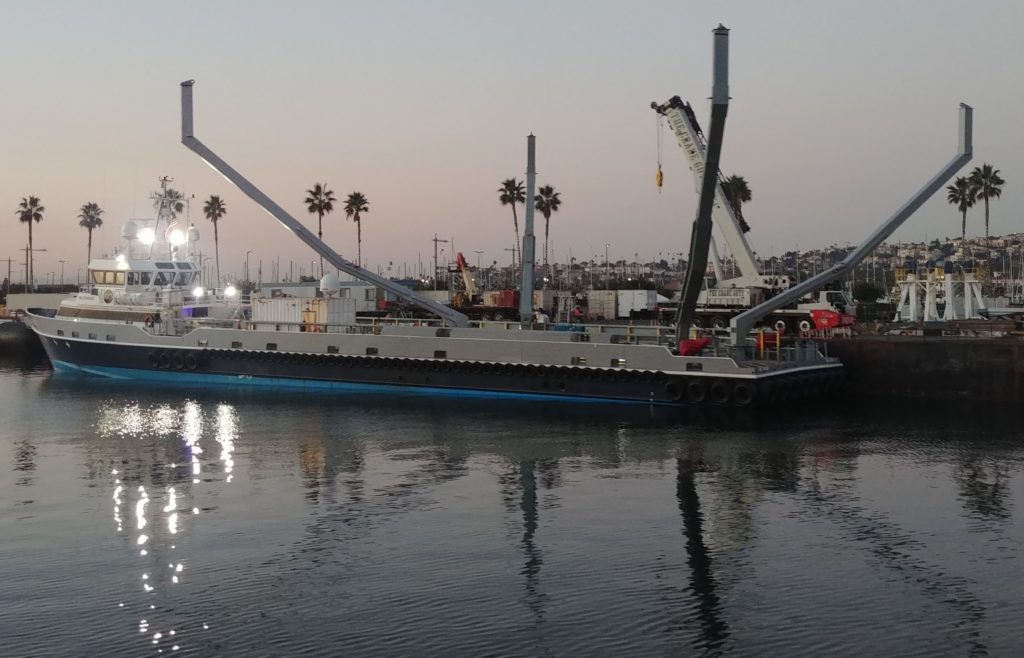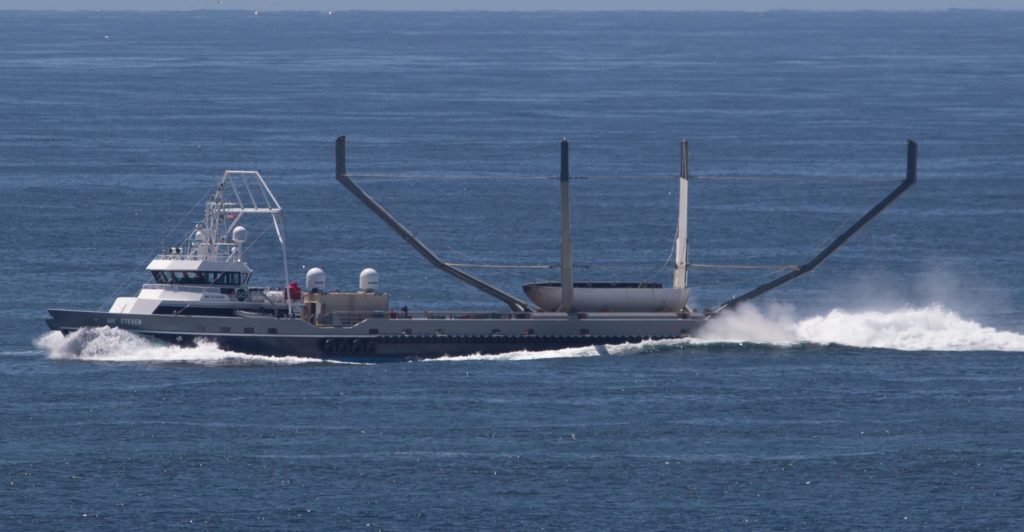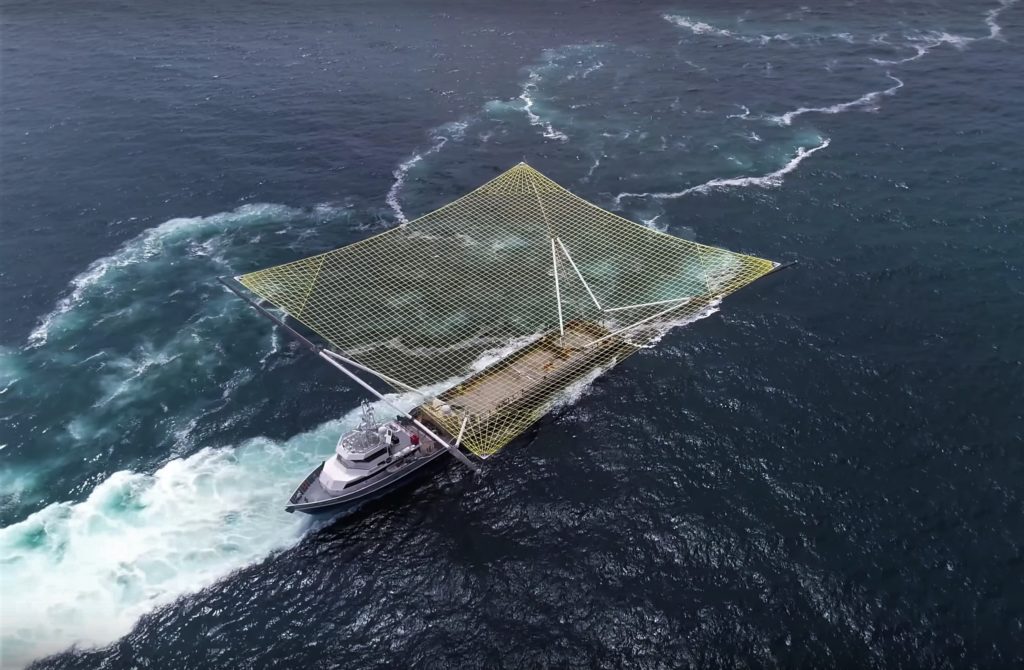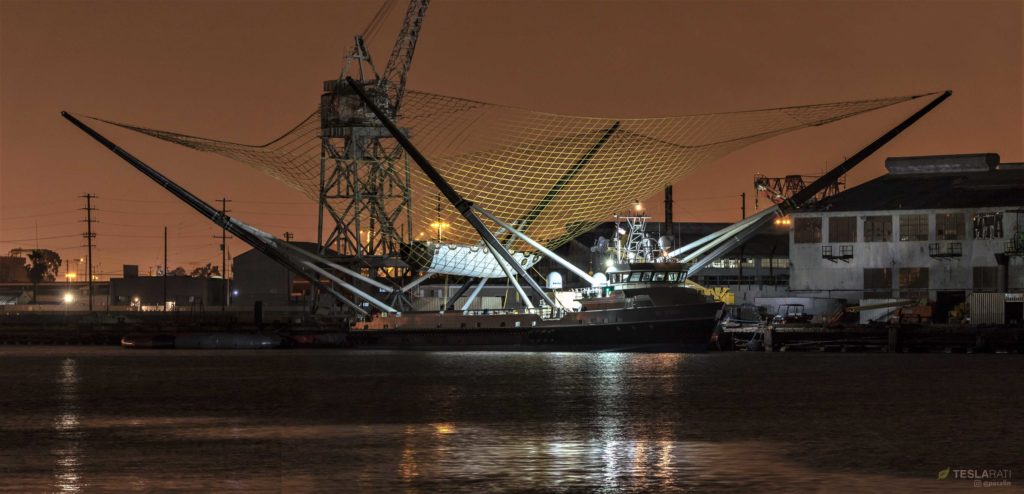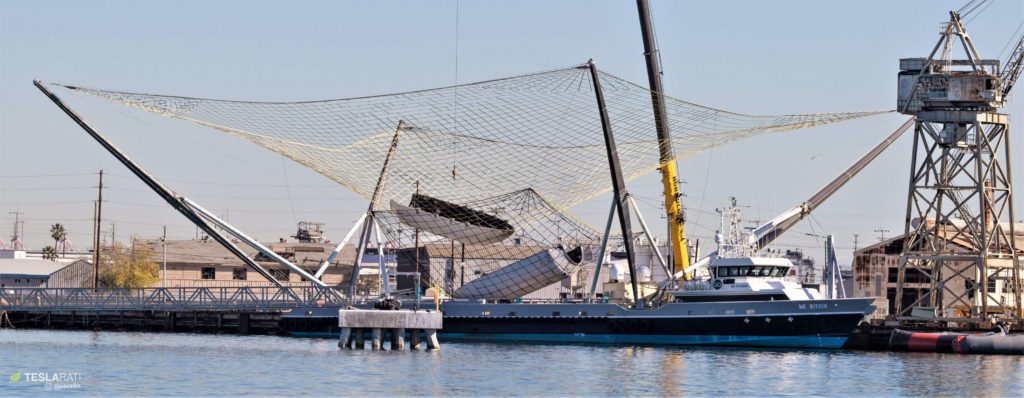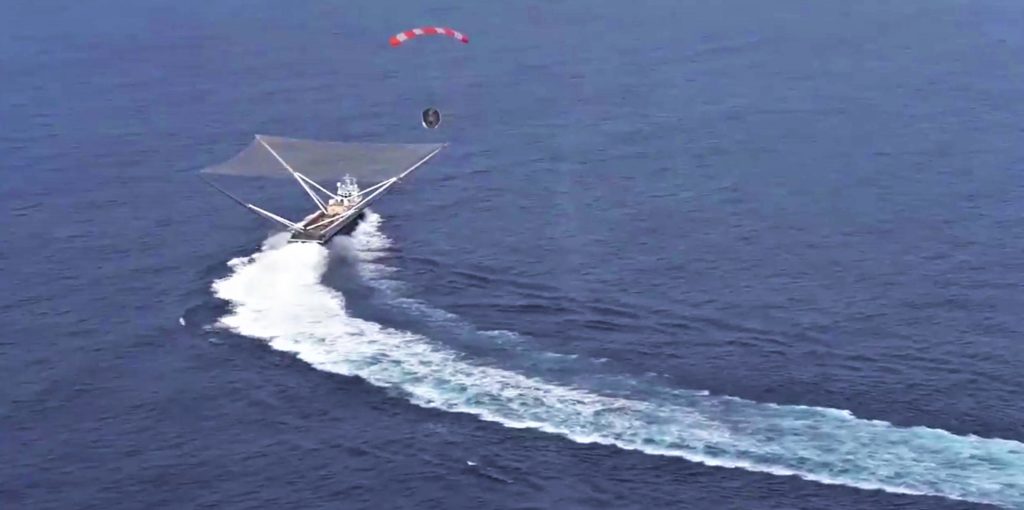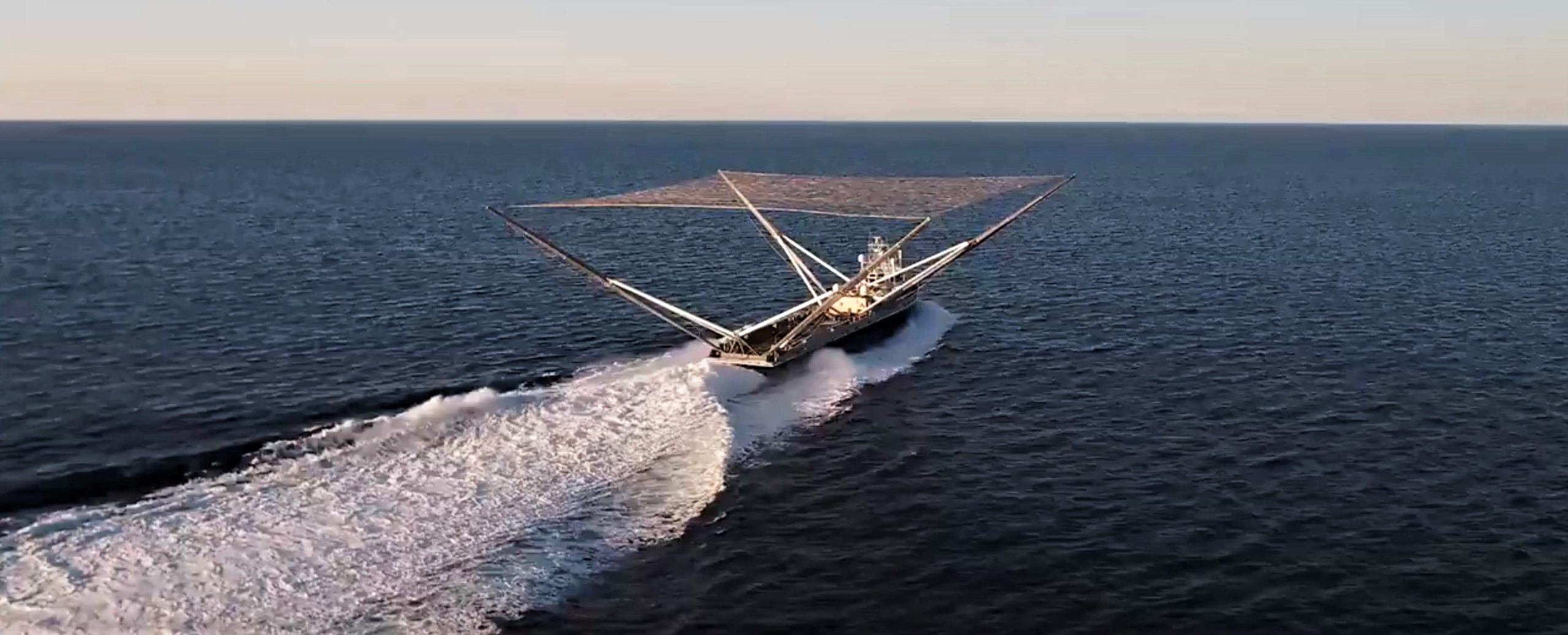
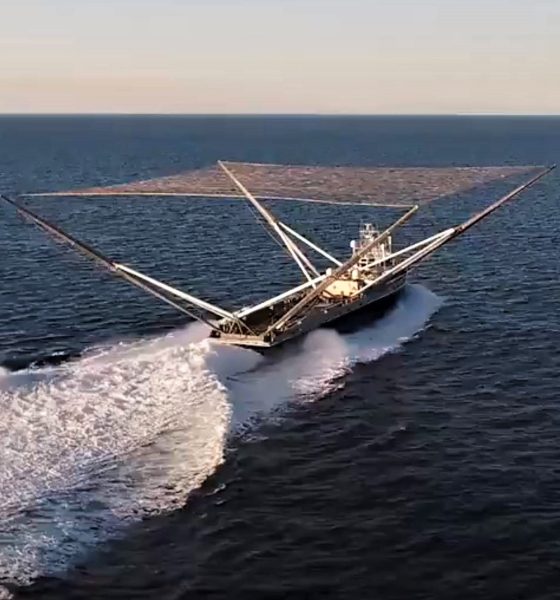
SpaceX
SpaceX fairing catcher Mr. Steven heads for Panama Canal after one last drop test
Iconic fairing recovery vessel Mr. Steven appears to have quietly departed for SpaceX’s Florida launch facilities a few days after completing (successfully or not) one final controlled fairing catch test in the Pacific Ocean.
While bittersweet for those that have closely followed the vessel’s development and many attempted Falcon fairing recoveries, this move should ultimately give Mr. Steven around three times as many opportunities to attempt fairing recoveries thanks to SpaceX’s significantly higher East Coast launch cadence.
Mr Steven docking last night after another helicopter drop test, fairing half aboard. #spacex @Teslarati pic.twitter.com/1uMm8ktzWY
— Pauline Acalin (@w00ki33) January 26, 2019
Under SpaceX lease since late 2017, the company moved the vessel to California and modified it with its first net and set of arms around December 2017. Mr. Steven attempted his first Falcon fairing catch – each half worth more than $3M – in February 2018 after the launch of Earth imaging satellite PAZ and two SpaceX Starlink prototypes, thus beginning a string of five unsuccessful recovery attempts for West Coast Falcon 9 launches. The lack of success has most certainly not been for a lack of trying, exemplified in large part by Mr. Steven’s frequent net and arm upgrades over the last year, culminating in the installation of four massive arms, a vast primary net, and a smaller secondary net below it.
Recent fairing recovery test with Mr. Steven. So close! pic.twitter.com/DFSCfBnM0Y
— SpaceX (@SpaceX) January 8, 2019
SpaceX engineers and technicians repeatedly managed to get Falcon fairing halves – autonomously guided by GPS after deploying parafoils – within 50 to a few hundred feet during several of those five post-launch attempts. In the last few months of 2018, SpaceX also began a program of controlled fairing drop tests, where a helicopter would lift a fairing half 5,000-10,000 feet up before releasing it for Mr. Steven. A recent drop test organized in either late-December or early-January saw the parasailing fairing half get so close to a successful catch that its parafoil rigging actually appeared to get tangled on (or at least bump) the edge of Mr. Steven’s net, spanning an area of around 3000 square meters (~30,000 sq ft).
Barring a continuation of SpaceX’s helicopter drop test program on the East Coast, Mr. Steven’s final controlled fairing recovery attempt occurred on January 25th, perhaps less than four days before the ship departed for Florida. After maneuvering wildly and reaching 28 mph (45 km/h) – the fastest speed yet clocked – on his trip back to port, Mr. Steven arrived with a fairing half tantalizingly cradled in the ship’s new secondary net, a perfectly ambiguous state that could indicate a successful catch and net transfer or a missed catch and ocean retrieval, with the smaller net used as an ad-hoc shock absorber during his sprint to port.
- The apparent fairing-grabbing mechanism or robot spotted aboard the SpaceX-leased vessel Mr. Steven. (Reddit /u/ vshie)
- Not nearly enough net, as it turned out. (Pauline Acalin, May 2018)
- Mr Steven testing his new net in a series of sea trials, July 11
- Mr. Steven returned to Port of San Pedro around on October 8th after a day spent at sea, apparently with a Falcon fairing half in tow. This is the second known time that a fairing has been in Mr. Steven’s net. The fairing was eventually lifted off around noon the following day. (Pauline Acalin)
- Mr. Steven was captured performing tests with a duo of fairings and nets at its Port of LA berth, January 22nd. (Pauline Acalin)
- Prior to his Panama Canal exit, Mr. Steven barely missed 2-3 successful Falcon fairing catches during several controlled drop tests. (SpaceX)
Back to Port Canaveral
Prior to Mr. Steven’s California station and arm/net upgrade, the vessel was introduced to SpaceX in Florida as a sort of faster version of the slower service vessels already used to support drone ship deployments and recover fairing halves (or shards) out of the ocean. Although it remains entirely possible that Mr. Steven’s abrupt journey towards southern Mexico is a false alarm, it appears quite likely that the vessel will ultimately end up back where it started its SpaceX journey. After returning to Port Canaveral, Mr. Steven should be able to support a range of post-launch fairing recovery attempts thanks to SpaceX’s consistently-busy East Coast launch schedule.
At his current cruising speed of ~18 knots (21 mph/35 km/h), Mr. Steven will take at least 9-10 days (~220-240 hours) to travel the ~7500 km (4600 mi) of ocean separating Port of LA and Port Canaveral. Even assuming many lengthy stops for fuel and supplies, the vessel should easily arrive in time to attempt its first East Coast fairing catch in support of SpaceX’s next launch, NET February 18th. After that, Crew Dragon’s inaugural orbital launch (DM-1) is targeted for late February, followed by Cargo Dragon’s 17th operational mission (NET March 16th) and the second-ever launch of Falcon Heavy, absolutely no earlier than March 7th.
Mr. Steven appears to have quietly departed Port of Los Angeles for Manzanillo, a port on the southwest coast of Mexico. This is likely Leg #1 of a voyage to Port Canaveral, where he can support #SpaceX's more frequent Florida launches. He'll be missed on the West Coast 🙁 pic.twitter.com/Jb5cOA2Cda
— Eric Ralph (@13ericralph31) January 29, 2019

Elon Musk
Starlink passes 9 million active customers just weeks after hitting 8 million
The milestone highlights the accelerating growth of Starlink, which has now been adding over 20,000 new users per day.

SpaceX’s Starlink satellite internet service has continued its rapid global expansion, surpassing 9 million active customers just weeks after crossing the 8 million mark.
The milestone highlights the accelerating growth of Starlink, which has now been adding over 20,000 new users per day.
9 million customers
In a post on X, SpaceX stated that Starlink now serves over 9 million active users across 155 countries, territories, and markets. The company reached 8 million customers in early November, meaning it added roughly 1 million subscribers in under seven weeks, or about 21,275 new users on average per day.
“Starlink is connecting more than 9M active customers with high-speed internet across 155 countries, territories, and many other markets,” Starlink wrote in a post on its official X account. SpaceX President Gwynne Shotwell also celebrated the milestone on X. “A huge thank you to all of our customers and congrats to the Starlink team for such an incredible product,” she wrote.
That growth rate reflects both rising demand for broadband in underserved regions and Starlink’s expanding satellite constellation, which now includes more than 9,000 low-Earth-orbit satellites designed to deliver high-speed, low-latency internet worldwide.
Starlink’s momentum
Starlink’s momentum has been building up. SpaceX reported 4.6 million Starlink customers in December 2024, followed by 7 million by August 2025, and 8 million customers in November. Independent data also suggests Starlink usage is rising sharply, with Cloudflare reporting that global web traffic from Starlink users more than doubled in 2025, as noted in an Insider report.
Starlink’s momentum is increasingly tied to SpaceX’s broader financial outlook. Elon Musk has said the satellite network is “by far” the company’s largest revenue driver, and reports suggest SpaceX may be positioning itself for an initial public offering as soon as next year, with valuations estimated as high as $1.5 trillion. Musk has also suggested in the past that Starlink could have its own IPO in the future.
News
SpaceX shades airline for seeking contract with Amazon’s Starlink rival

SpaceX employees, including its CEO Elon Musk, shaded American Airlines on social media this past weekend due to the company’s reported talks with Amazon’s Starlink rival, Leo.
Starlink has been adopted by several airlines, including United Airlines, Qatar Airways, Hawaiian Airlines, WestJet, Air France, airBaltic, and others. It has gained notoriety as an extremely solid, dependable, and reliable option for airline travel, as traditional options frequently cause users to lose connection to the internet.
Many airlines have made the switch, while others continue to mull the options available to them. American Airlines is one of them.
A report from Bloomberg indicates the airline is thinking of going with a Starlink rival owned by Amazon, called Leo. It was previously referred to as Project Kuiper.
American CEO Robert Isom said (via Bloomberg):
“While there’s Starlink, there are other low-Earth-orbit satellite opportunities that we can look at. We’re making sure that American is going to have what our customers need.”
Isom also said American has been in touch with Amazon about installing Leo on its aircraft, but he would not reveal the status of any discussions with the company.
The report caught the attention of Michael Nicolls, the Vice President of Starlink Engineering at SpaceX, who said:
“Only fly on airlines with good connectivity… and only one source of good connectivity at the moment…”
CEO Elon Musk replied to Nicolls by stating that American Airlines risks losing “a lot of customers if their connectivity solution fails.”
American Airlines will lose a lot of customers if their connectivity solution fails
— Elon Musk (@elonmusk) December 14, 2025
There are over 8,000 Starlink satellites in orbit currently, offering internet coverage in over 150 countries and territories globally. SpaceX expands its array of satellites nearly every week with launches from California and Florida, aiming to offer internet access to everyone across the globe.
Currently, the company is focusing on expanding into new markets, such as Africa and Asia.
News
Tesla hints at Starlink integration with recent patent
“By employing polymer blends, some examples enable RF transmission from all the modules to satellites and other communication devices both inside and outside the vehicle.”

Tesla hinted at a potential Starlink internet terminal integration within its vehicles in a recent patent, which describes a vehicle roof assembly with integrated radio frequency (RF) transparency.
The patent, which is Pub. No U.S. 2025/0368267 describes a new vehicle roof that is made of RF-transparent polymer materials, allowing and “facilitating clear communication with external devices and satellites.”
Tesla believes that a new vehicle roof design, comprised of different materials than the standard metallic or glass elements used in cars today, would allow the company to integrate modern vehicular technologies, “particularly those requiring radio frequency transmission and reception.
Tesla has recently filed a US patent application on integrating RF transparent materials into the roof structure.
“facilitating clear communication with external devices and satellites”
Tesla fleet is getting @Starlink connectivity integration soon. LFG @Tesla @elonmusk… pic.twitter.com/bLa8YtPLd1
— Chansoo Byeon (@Chansoo) December 9, 2025
Instead of glass or metallic materials, Tesla says vehicles may benefit from high-strength polymer blends, such as Polycarbonate, Acrylonitrile Butadiene Styrene, or Acrylonitrile Styrene Acrylate.
These materials still provide ideal strength metrics for crashworthiness, stiffness for noise, vibration, and harshness control, and are compliant with head impact regulations.
They would also enable better performance with modern technologies, like internet terminals, which need an uninterrupted signal to satellites for maximum reception. Tesla writes in the patent:
“By employing polymer blends, some examples enable RF transmission from all the modules to satellites and other communication devices both inside and outside the vehicle.”

One of the challenges Tesla seems to be aware of with this type of roof design is the fact that it will still have to enable safety and keep that at the forefront of the design. As you can see in the illustration above, Tesla plans to use four layers to increase safety and rigidity, while also combating noise and vibration.
It notes in the patent that disclosed examples still meet the safety requirements outlined in the Federal Motor Vehicle Safety Standards (FMVSS).
Starlink integrated directly into Tesla vehicles would be a considerable advantage for owners. It would come with a handful of distinct advantages.
Initially, the inclusion of Starlink would completely eliminate cellular dead zones, something that is an issue, especially in rural areas. Starlink would provide connectivity in these remote regions and would ensure uninterrupted service during road trips and off-grid adventures.
It could also be a critical addition for Robotaxi, as it is crucial to have solid and reliable connectivity for remote monitoring and fleet management.
Starlink’s growing constellation, thanks to SpaceX’s routine and frequent launch schedule, will provide secure, stable, and reliable internet connectivity for Tesla vehicles.
Although many owners have already mounted Starlink Mini dishes under their glass roofs for a similar experience, it may be integrated directly into Teslas in the coming years, either as an upgrade or a standard feature.
